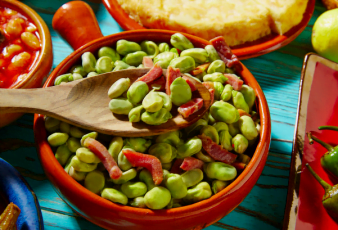Jasmine rice is a type of aromatic rice that originated in Thailand but has become increasingly popular around the world due to its distinctive flavor and aroma.
However, what is the story behind this delicious rice? In this article, we will explore the history of jasmine rice, from its origin to its popularity today.
Ancestral Origin

The origin of jasmine rice can be traced back to the northern region of Thailand, in particular to the province of Chiang Mai. The region has a large number of rivers and streams, which provide a constant supply of fresh water for rice cultivation. In addition, the region’s warm and humid climate is ideal for rice growth.
Thai folk legend has it that jasmine rice was created more than 700 years ago in the town of Phatthalung in southern Thailand. According to legend, a local farmer found a wild rice plant with long, thin grains that produced a fragrant and pleasant aroma. The farmer cultivated this plant and developed it over several generations.
Although the exact history of the origin of jasmine rice is somewhat uncertain, there are two hypotheses that became the most popular in this regard:
- Jasmine rice developed from a variety of rice from India that was brought to Thailand by Indian traders. Local farmers then crossed this variety with existing Thai rice to create a new variety of aromatic rice that became the jasmine rice we know today.
- Jasmine rice originated from a variety of rice grown in northern Vietnam. The Vietnamese brought this variety to Thailand during the Nguyen dynasty in the 18th century and Thai farmers cultivated and developed it until it became today’s variety of jasmine rice.
Regardless of its exact origin, jasmine rice became an integral part of Thai cuisine and was used in a variety of dishes, from soups to a variety of fried rice recipes, to curries and stews.
If you would like to experience the taste of this type of rice at home you can try a simple recipe at the following link: https://successrice.com/recipes/easy-shrimp-fried-rice/. Because of its distinctive flavor and pleasant aroma, jasmine rice became a popular ingredient in the cuisine of other Southeast Asian countries and eventually around the world.
Ingredient Of Cultural And Religious Value

Jasmine rice is not only an important food in the Thai diet and a popular ingredient in the cuisine of Southeast Asia and the rest of the world but also has significant cultural and religious value in many societies around the world.
- In Thai culture, rice is considered a symbol of life and prosperity. Jasmine rice, in particular, is highly valued because of its distinctive aroma and flavor. In ancient times, jasmine rice was used to make offerings to nature spirits in religious ceremonies and was offered to monks in Buddhist temples as a symbol of respect and honor.
- In the Buddhist religion, rice also has significant symbolic value. Rice is considered a sacred food and is used in rituals and offerings throughout Southeast Asia. In Thailand, Buddhist monks are fed by the rice donations they receive from the faithful as part of their monastic life.
- Jasmine rice also plays an important role in festivities and ceremonies throughout Southeast Asia. In Thailand, for example, jasmine rice is used in the celebration of the Songkran Water Festival.
- In Vietnamese culture, rice is a staple in their daily diet and is used in a variety of dishes, from soups to main dishes.
- In Indonesia, rice is also a staple food and is considered a symbol of unity and community.
- In Balinese culture, rice is used in religious ceremonies and rituals where it is offered as an offering of goodwill and thanksgiving.
As the demand for Asian foods has increased worldwide, this type of rice has become a popular ingredient in restaurants and homes around the world.
In addition, hybrid varieties have been produced and are grown in other countries such as India, Vietnam, the United States, and Australia, although the original Thai variety remains the most valued for its distinctive flavor and aroma.
In short, the history of jasmine rice is a blend of culture, tradition, and culinary evolution that has led to its recognition and popularity around the world.
Read Also:




























